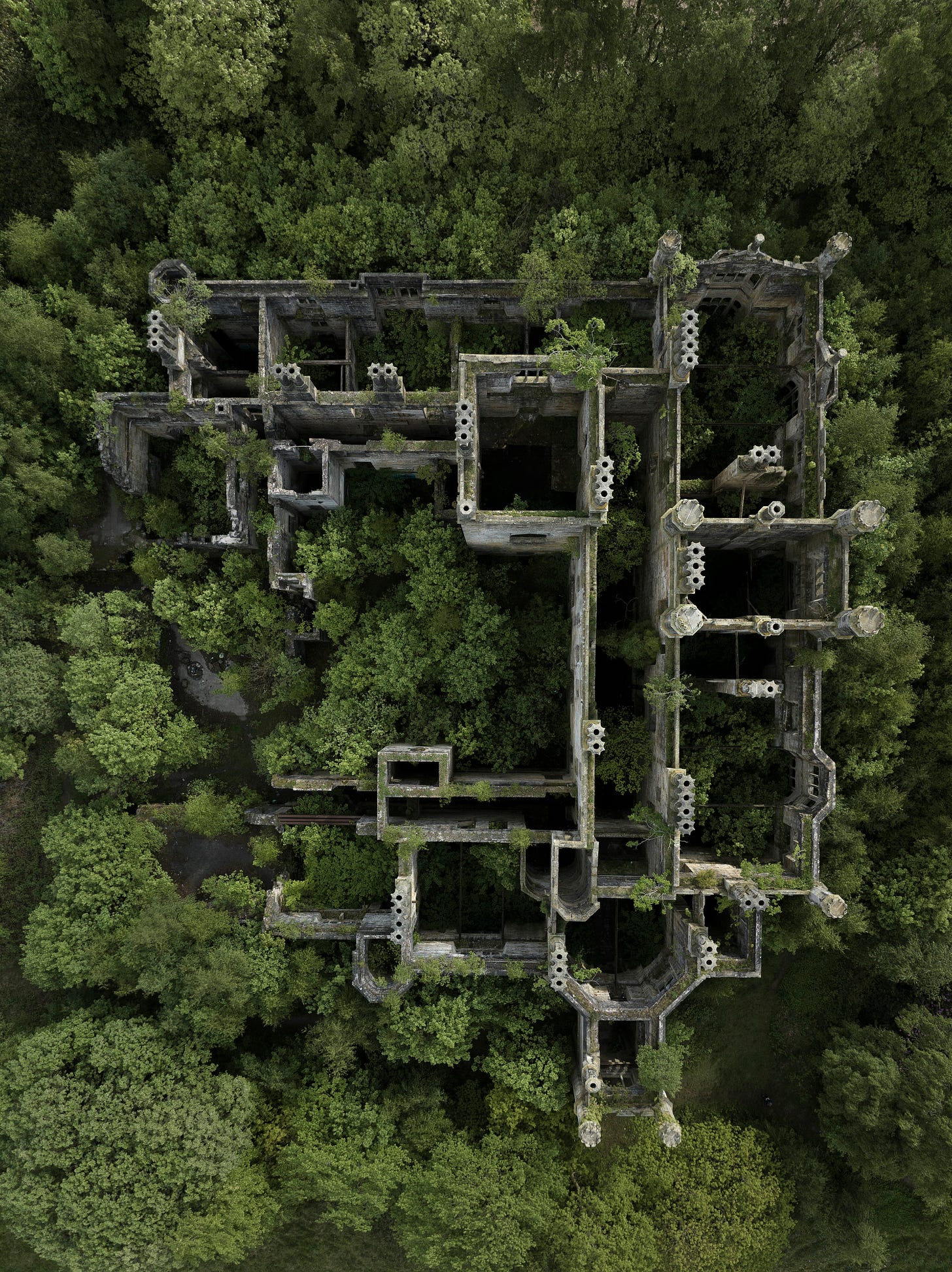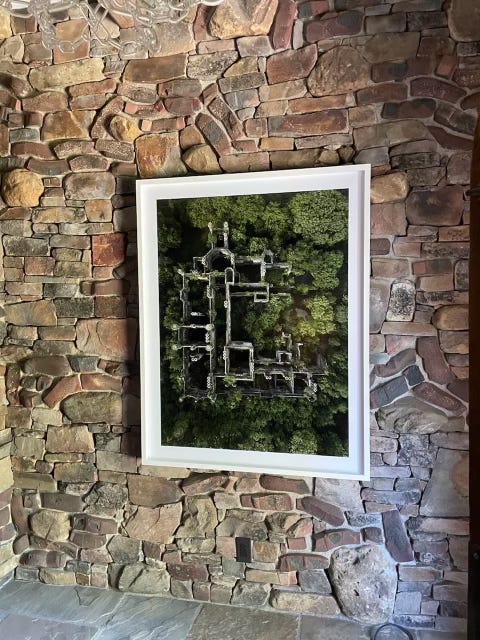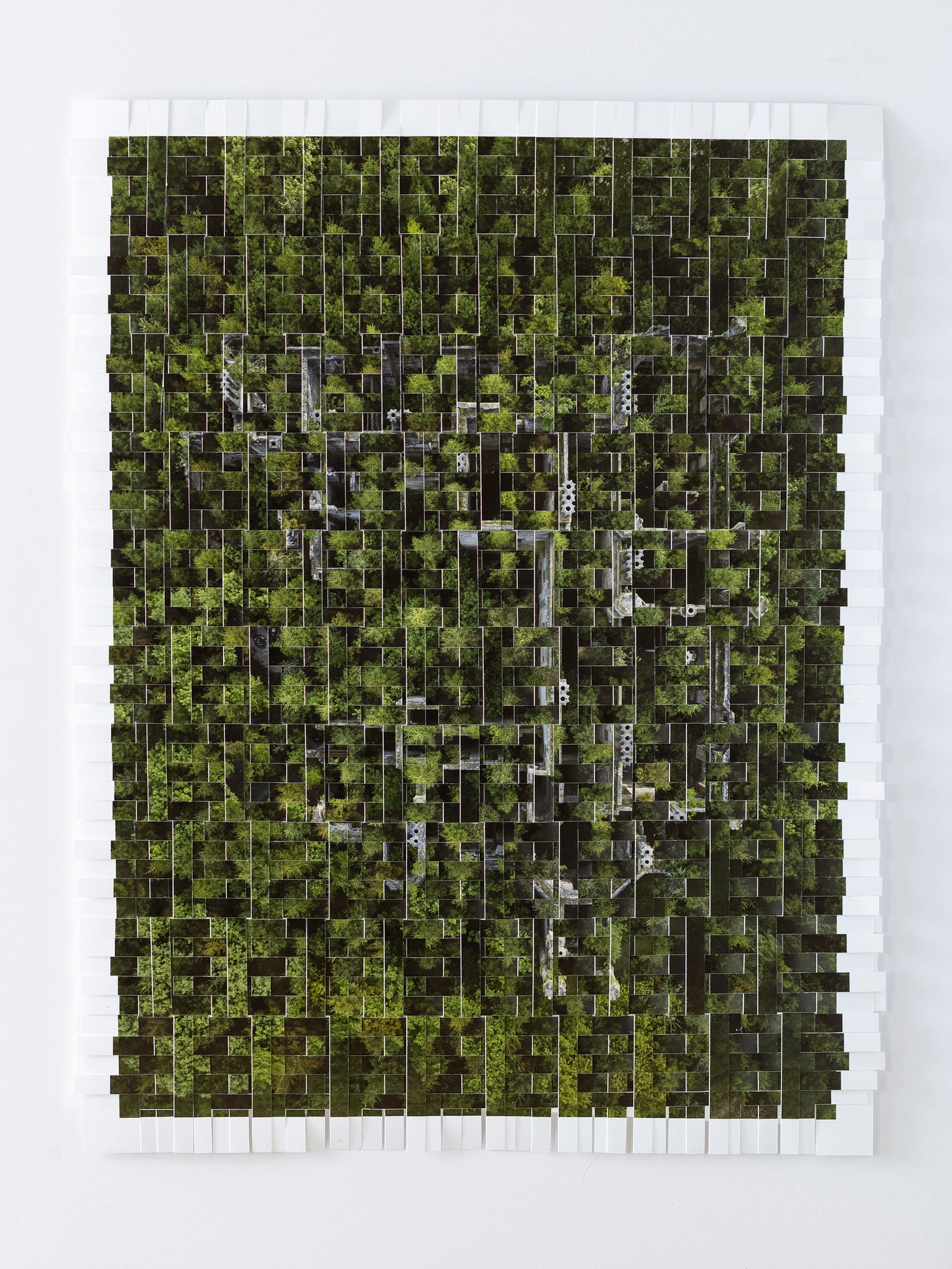2. Empire
A Family Home Charts the Rise and Fall of an Empire
Fabricated Land is an ongoing body of work composed of photoweaves of abstract aerial imagery. Each weave tells hidden stories of the past’s influence on the present. This month, I am sharing and discussing my ideas around images from the series.
The battle was swift; bodies littered the moorland and blood stuck plaid to heather.
On the defeated Jacobite side, a teenager loyal to the treasonous king in exile watched his father, William Murray, Earl of Dunmore, be taken captive by the British and sent to the Tower of London. He died in captivity five years later in 1756. The son, John Murray, became the 4th Earl of Dunmore.
The story of their home, Dunmore House, charts the rise and fall of the British Empire over the last three centuries.
Dunmore Ruins, Stirling, 2023.
Edition of 3
Photographic print on paper
50 x 37.5 inches
John Murray rose up the ranks of the British Army, becoming Governor of New York by the age of 40 and then of Virginia a year later. He would amass a great fortune through proceeds from slavery. He is also known for Lord Dunmore’s war, the Ethiopian regiment and for gifting a pineapple-shaped summerhouse to his wife for her birthday. You can still visit it today.
His fortune was passed to his son George Murray, the 5th Earl, who razed the family manor at Airth near Stirling and built a grander Tudor-Gothic-style structure between 1820 and 1825. He also improved, as he saw it, their Highland estate on the Isle of Harris in the Outer Hebrides, clearing off the local tenants in 1837 and sending them to Lowland factories or the New World.
As time passed the family fortunes declined, like the British Empire itself, and the estate was broken up in the 20th century. The house briefly became a school but now stands ruined, colonised by the forests the earls planted, and these days the backdrop to TV dramas.
A framed print of my image (1 of an edition of 3) was bought by a collector in California. I love the look of it against that wall, and the way in which the print continues the story about the decline of empire in this setting.
I also used this image in a photoweave that combines an evergreen forest with a bird’s-eye view of the mansion, anticipating nature’s continuing reclamation of the land. The weave pattern is called Faultlines, named after the long vertical threads and used in works depicting dramatic shifts in culture or geography. Each weave is the combination of two photographic images using a specific weave pattern.
Airth, Lamancha (Faultines), 2023
Photographic print on paper, hand-cut and woven
21.5 x 16.5 inches
Also available as a smaller limited edition print.






The framed print looks fabulous on that wall!